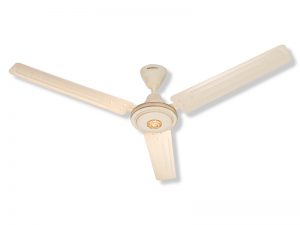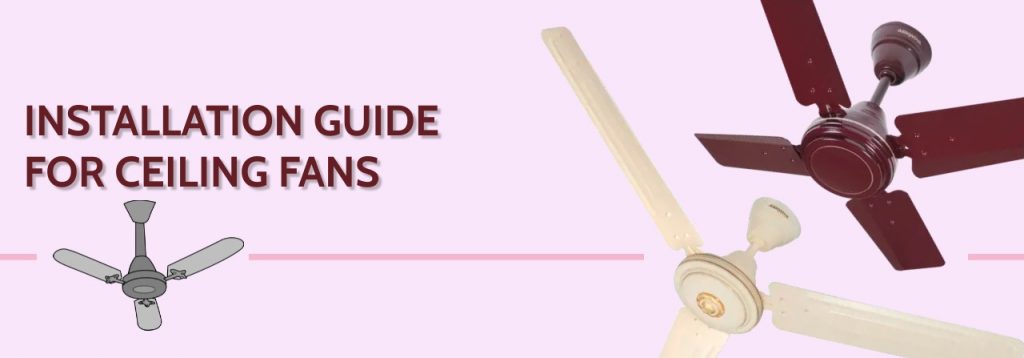INSTALLATION GUIDE FOR CEILING FANS
A ceiling fan is now a household product and a necessity during the scorching heat of Indian summers. Installing a ceiling fan is easy if done using the right process.
One must always begin with some basic hygiene steps.
- There should be no children or elderly people around during the installation.
- The installation site should be free from all physical obstacles lying around.
- The power supply should be switched off until installation is complete.
Things to keep in mind before installation.
- The clearance between the fan blades and the floor of the room should be at least 7 feet. The ideal gap is 8 – 9 feet for optimal airflow.
- The minimum gap between the ceiling/roof of the room and the fan blades should be 8 – 10 inches.
- The clearance between the fan blades and walls, doors, wall furniture like cabinets should be at least 18-20 inches.
- There should be a ceiling-mounted hanger or hook that you use to hang the ceiling fan. If you do not have one, we would recommend you to get help to fix one to the ceiling before installing a ceiling fan. A hook can be open type in the shape of a ‘J’ or it can be of the shape ‘U’. Both are acceptable.
- You should also have an electrical connection available near the hanger or the hook.
- Once you have the ceiling-mounted hanger or hook ready, you can unpack the ceiling fan and plan for installation.
Unpacking and Assembling the Fan
- A ceiling fan motor box will usually have a motor, downrod, shackle assembly, canopy, and supply wire. Fan blades come in a separate box.
- Take out all the components from the respective boxes and put them on a flat surface.
- Keep the bottom canopy on a flat surface and insert the downrod into it. Remember the slit-hole side of the downrod should be towards the bottom canopy. Then slide the top canopy from the other end. The smaller openings of both the canopies should face each other on the down rod.
- Take the supply wire – the red and black twisted electrical wires that we use in our homes for electrical connections. Pass it through the top of the downrod so that it comes out from the slit hole.
- Place the fan motor on a flat surface. Keep some cushion below the motor to avoid scratches.
- Remove the safety screw from the shaft. The safety screw can be found around the top of the shaft.
- Slide down the downrod onto the shaft in such a way that the split hole is aligned with the small screw hole on the shaft.
- Open the shackle assembly packet. It has a bolt assembly with split pin, nut, washers, and pads.
- Insert the hex bolt onto the bigger hole of the downrod and through the shaft. Use the paddings, washers, and nut to fix the bolt. Ensure that the nut is fully tight.
- Put the split pin on the bolt.
- Put the safety screw back on the small hole on the shaft.
- Connect the supply wire to the terminal box on the motor, next to the capacitor.
- Pull the supply wire from the other end of the downrod so that no extra wire hangs loose on the motor.
- Lower the bottom canopy onto the motor in such a way that it does not touch the motor.
Blade Assembly
- Pull out the blades from the blade box.
- Unscrew the screws placed on the blade attachment positions on the fan motor.
- Place the blades on the fan motor in such a way that they align to the screw holes. Fix the screws and tighten them properly.
Mounting the Fan
- Take the shackle assembly and remove the bolts.
- Align the shackle on the top end of the downrod so that the holes are in a line.
- Push the bolt through the aligned holes and tighten the nut.
- Hang the fan to the hook.
- If it is a ‘J†type hook, it is easy to just hang the fan. If it is a ‘U’ type hook, the shackle has to be first inserted in the hook and then tightened to the fan.
- Once done, connect the red and black wires from the fan to the main supply. Ensure that the connections are secured with tape. Switch on the supply to check.
Bingo! Your fan is ready for use.

Explore our products

